MORE GREATPAVILION TITLES
join our newsletter here
tap on the titles below to read more




 www.anovabooks.com
www.anovabooks.com


To the memory of Alan Davidson
First published in the United Kingdom in 2008 by PAVILION BOOKS
10 Southcombe Street, London, W14 0RA
An imprint of Anova Books Company Ltd
Design and layout Pavilion, 2008
Text Sri Owen, 2008
Food photography Gus Filgate, 2008
Other photography see acknowledgements on page 287
Commissioning editor: Kate Oldfield
Senior editor: Emily Preece-Morrison
Designer: Louise Leffler at Sticks Design
Cover design: Georgina Hewitt
Photographer: Gus Filgate
Home economist: Jane Suthering
Prop stylist: Wei Tang
Copy editor: Siobhan OConnor
Proofreader: Alyson Silverwood
Indexer: Roger Owen
Production: Rebekah Cheyne
Digital editor: Giney Sapera
First eBook publication 2014
ISBN 978-1-909815- 47-6
Also available as Hardback
ISBN 978-1-862056-78-7
The moral right of the author has been asserted.
All rights reserved. No part of this publication may be reproduced, stored in a retrieval system, or transmitted in any form or by any means electronic, mechanical, photocopying, recording or otherwise, without the prior written permission of the copyright owner.
This book can be ordered directly from the publisher at
www.anovabooks.com , or try your local bookshop.
A NOTE ON PORTION SIZES
In many recipes in this book, there is a note about how many people the given quantities can serve. This should be taken as a rough guide only. In other recipes, especially those for snacks, satays and condiments, it is not possible to say even approximately how many people can be served from the suggested quantities. The outcome will depend on how the food is presented: whether as a starter, a main course, a condiment, snack, or finger food. As a general rule, Indonesian meals are brought to the table on large platters for guests to help themselves, though there is no reason why portions should not be plated, western-style, in the kitchen.
INTRODUCTION
This book has been taking shape in my mind for many years. I have so long dreamed of writing about the food and cooking of the Indonesian islands that I am familiar with, and setting it against the story of my life and experience. More recently, I have wanted also to write about my relationship with the food and wine of Italy, and my experience of cooking in the country where I made my first European landfall.
The book therefore includes recipes for almost all the classic dishes of Java and Sumatra, with others from Bali, Sulawesi and Kalimantan; there is even one from Irian Jaya, a province which I confess I have not yet visited. I have included, as in most of my books, a glossary, a little fuller and more detailed here, as required by the ever-widening interests and background knowledge of my readers, many of whom are now much more widely travelled than I am. And of course I have taken note, and advantage, of the changes in British food habits: the availability of exotic ingredients, the willingness to seek new flavours, the ease with which knowledge and enthusiasm are disseminated on the Internet.
Sending a book out into the world, one naturally wishes it success and long life, as one would ones own child. I have two particular hopes for this book. The first is that it may be translated into other languages, so that it can join, and I hope stimulate, the accelerating current of interest in Southeast Asian food around the world. Even more importantly, I hope it will encourage its readers to cook Indonesian food for themselves, to go to Indonesia and to get to know Indonesians and their multifarious cultures food is surely a gateway to cultural enjoyment and understanding. I have always loved to cook, for myself, my family, my friends and my customers (in the years when I had my shop). Cooking is a creative act; a cultural statement as significant as writing or reading books. I hope that my readers enjoy this book, but it will fulfil its real ambition only when they take it into the kitchen.


Chapter One: 193952
Early Days

The roof of a traditional Minangkabau house with cloud-wrapped Singgalang behind, West Sumatra.
I remember the exact moment when I began to pay attention to food and notice what I was eating. I was almost four years old. We were having a party for my sisters second birthday. It was a small, quite disorganized party: half a dozen small children running around on the grass in front of the schoolhouse, nibbling boiled soya beans in their shells. When I eat these now, as an expensive starter in a London restaurant, they do not bring childhood memories flooding back, but they do make me think of my food history, its highs and lows, and the strange way it has blended with all my life experiences. Moments in the past become associated with tastes and textures. Patterns emerge: an early life spent mostly in small towns in Sumatra and Java, settled and peaceful at first, then disrupted by war. My life story and my development as a cook are interwoven, in those early years especially, with the story of my country.
In the 1930s, Indonesia was still overwhelmingly rural, a land mostly of peasant farmers trying to grow enough food to feed themselves. There were fishermen, too, and many people were employed on the big tea, coffee and sugar plantations, owned by foreigners, most of them Dutch, as we were all subjects of the Queen of the Netherlands; however, every village family still had their own small piece of land where they grew vegetables and kept chickens, and every house was likely to be shaded by a coconut palm or a papaya or breadfruit tree. Indonesias population then was perhaps a third of what it is today. Good land was already getting scarce, the forests were being cut back year by year to make space for new settlements, but as long as the rains came at the right time and in the expected quantity there was always enough to eat, and to eat well whenever a festival came around, which was often.
In seventy years, life for all Indonesians has been transformed several times over, and I am not sure which astonishes me most: the number of things that have changed or the stubbornness with which old ways and attitudes survive. More than half of the population now live in cities, of which Jakarta, the capital, is by far the biggest and the most dynamic and the toughest if youre poor. Yet people keep flooding in, and Indonesia is now the worlds fourth most populous nation. Ageing rice farmers see their children go to college, get city jobs and never come back, except once a year at Lebaran, the Muslim New Year. The grandchildren eat at McDonalds and spend their free time in front of TV or on the Internet. Yet the food markets remain as lively as ever, in cities as well as small towns. Street-food traders flourish, and the

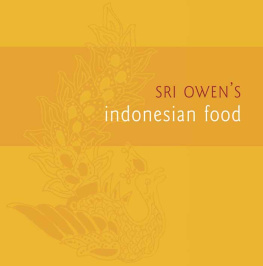

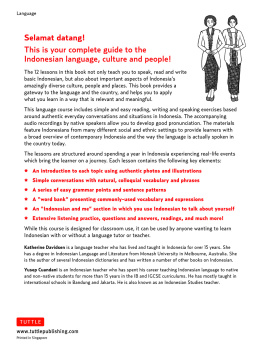
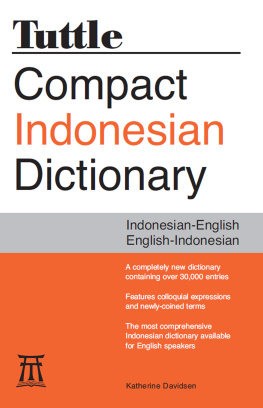
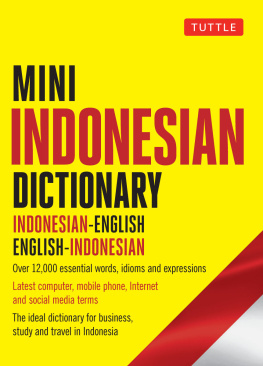
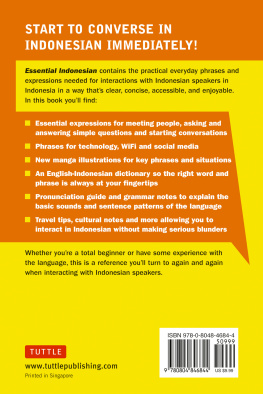
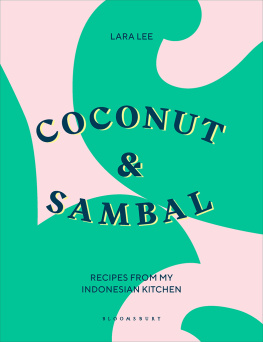



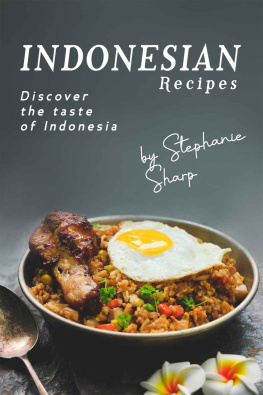







 www.anovabooks.com
www.anovabooks.com



